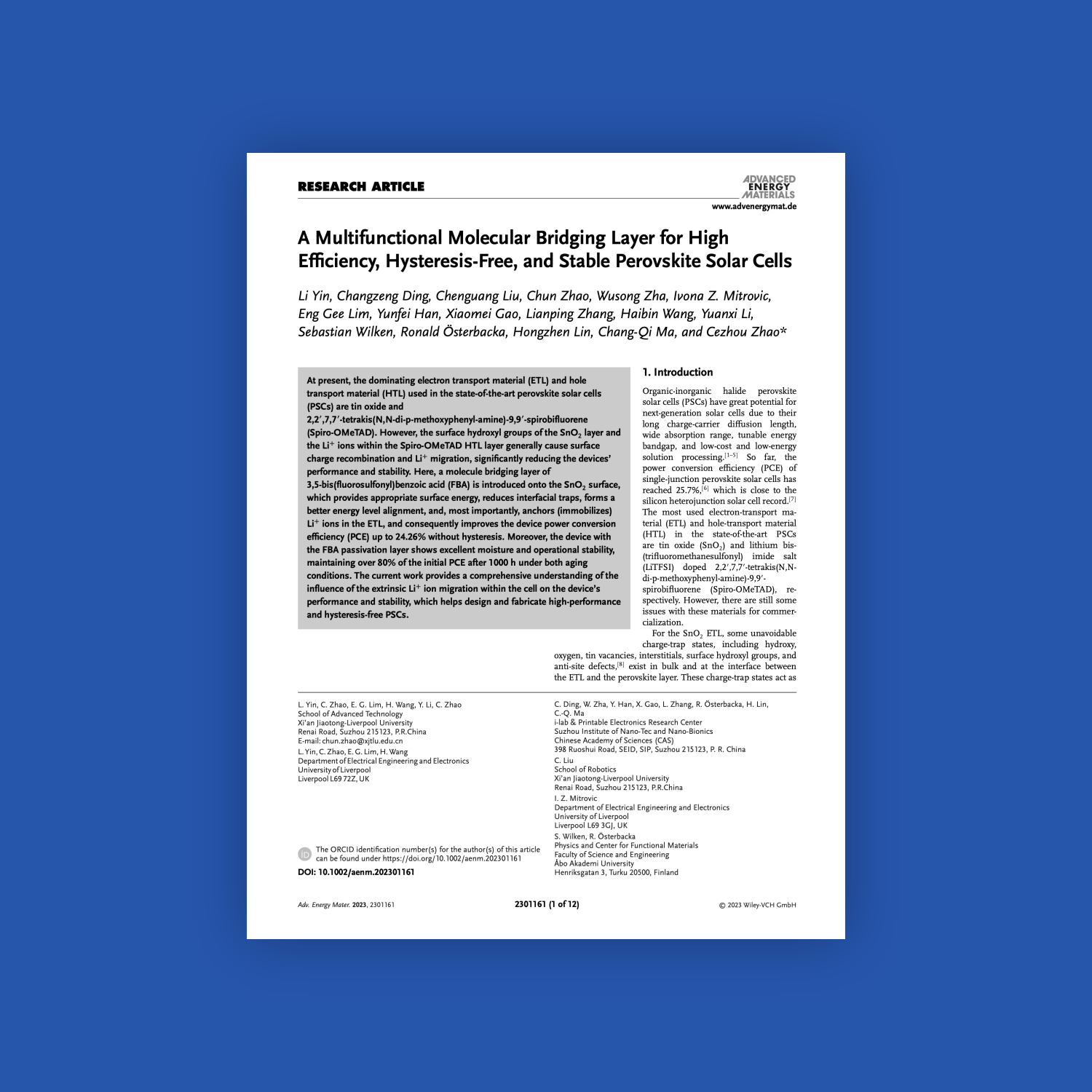Sometimes, things don’t go as planned.
I was asked to help understand why an extremely thin film of molecules, known as FBA, that bridges between the electron transport layer and the active layer in perovskite solar cells, significantly improves the device performance. The project is a collaboration between the SINANO Institute in Suzhou, China, and colleagues from Åbo Akademi here in Turku.
The team from SINANO showed that the FBA layer boosts the open-circuit voltage, but also the long-term stability. Devices with FBA achieved an efficiency exceeding 24%, which is at the forefront of perovskite solar cell research. Now the question was: What makes the devices with the bridging layer so good?
Some hypotheses suggested that the improvement could be related to the energetic configuration at the interface. My task was to verify this through numerical simulations. However, without delving too deeply into the details, I found that this does not seem to be the primary factor.
While frustrating at first, such falsification is an integral part of science. In fact, my findings (or non-findings, if you will) guided us toward a new and more nuanced interpretation that considers the combined effects of multiple factors. The work has now been published in Advanced Energy Materials.
So, while my simulations didn’t make it into the final paper, they did make an important contribution. This serves as a good reminder that, in most cases, there is more to a scientific study than what is visible in the end product.
Reference
Li Yin et al. A Multifunctional Molecular Bridging Layer for High Efficiency, Hysteresis-Free, and Stable Perovskite Solar Cells. Adv. Energy Mater. 13, 2301161 (2023)
